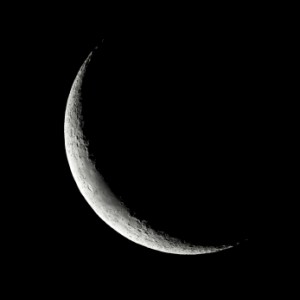70 c.e. Titus, Emperor of Rome, destroyed the Second Temple in Jerusalem. Not content with conquest, he further humiliated the Jews by building a triumphal arch in Rome to mark his victory. The arch was decorated with reliefs of the holy vessels used in the Temple, including the seven-branched menorah. He issued coins bearing the inscriptions Judaea Capta (Judea is captured) and Judaea Devicta (Judaea is vanquished).
What self-respecting Jew would pass under the Arch of Titus? It stood as physical confirmation of our defeat and degradation. Little could Titus have known that in his arrogant declaration of conquest he preserved the seeds of Jewish rebirth.
 Nearly two thousand years later, when the State of Israel was established, its government chose the seven-branched menorah as its national symbol. The menorah represented light, and Israel was determined to be a light and blessing to its people and to mankind. There was only one problem. No one knew what the Temple menorah actually looked like. But then someone remembered – a true representation of it had been preserved on the Arch of Titus!
Nearly two thousand years later, when the State of Israel was established, its government chose the seven-branched menorah as its national symbol. The menorah represented light, and Israel was determined to be a light and blessing to its people and to mankind. There was only one problem. No one knew what the Temple menorah actually looked like. But then someone remembered – a true representation of it had been preserved on the Arch of Titus!
Was it irony or fate that this symbol of a strong, dynamic, and renewed State of Israel was taken directly from the Arch of Titus? That Titus’ statement of conquest and humiliation was transformed into a symbol of Jewish pride?
The fabric of Jewish life is interwoven with the hurts of the past, the challenge of the present and the hope of the future. Past humiliations contribute to the pride of the present, reminding us that we are a people forever transformed from avdut to cherut. To be Jewish is to be constantly aware that the gift of that blessing is often wrapped in the cloak of sadness. It is to be always hopeful, as irrational as it may often seem to be so.
After all, was hope and optimism a reasonable outlook for the survivors of Auschwitz? Yet hundreds of thousands entered the port of Haifa to rebuild our homeland. Was optimism sensible when a volunteer army faced Arab states with a population forty times its size?
Was it logical to anticipate that in America, over one hundred thousand students would attend day schools and Yeshivot Gedolot and Kollelim would flourish in America’s secular cities? Who could have predicted that in an era of intermarriage and secularization, thousands of young men and women would become ba’ale teshuva, spurred on by NCSY, seminars and by dynamic and creative rabbis and their sophisticated outreach programs?
Jewish existence is a constant dance of dualities, with humiliation and sadness in balance with blessing and joy.
 So, too, there are two beginnings to Torah. The first, “In the beginning God created,”and the second, found in Parashat Bo, “This month shall be the head month to you. It shall be the first month of the year.” Rashi suggests that the Torah should have begun with the latter, for this pasuk teaches not just Creation, but instructs us that there is ongoing Creation, there is renewal, as exemplified by the constantly changing phases of the moon.
So, too, there are two beginnings to Torah. The first, “In the beginning God created,”and the second, found in Parashat Bo, “This month shall be the head month to you. It shall be the first month of the year.” Rashi suggests that the Torah should have begun with the latter, for this pasuk teaches not just Creation, but instructs us that there is ongoing Creation, there is renewal, as exemplified by the constantly changing phases of the moon.
As Jews, we celebrate two “types” of days. Shabbat and Yamim Tovim are in the first. Rosh Chodesh characterizes the second. The kedusha of Shabbat and Yom Tov is obvious. Rosh Chodesh, on the other hand, seems to be just another day. There are no restrictions, no meaningful or practical observances. Like the new moon itself, its significance is hidden. There is a sense of tzniut, of modesty, in Rosh Chodesh. Its sanctity must be carefully and deliberately revealed, just as is the case for most significant principles and teachings in Judaism.
Wherein lies the mystery and mystique of Rosh Chodesh?
Rav Soloveitchik teaches that while Shabbat and Yom Tov receive their sanctity and significance from specific historical-religious events and eras, such as Creation, Revelation or the Exodus from Egypt, the significance of Rosh Chodesh emanates directly from the Jewish embrace of Renewal. The Jew identifies personally and dynamically with the moon; with revival from an almost nonexistent state, with illumination returning from a state of darkness. The Talmud alludes to this when it teaches: sanctify the moon, and I will send you a sign – David Melech Yisrael chai vekayam! David, who was defeated and humiliated, lives! He will rise! He will reign with power and pride. Moshiach will be ben David.
Rosh Chodesh speaks to this eternal faith in redemption yet to come, in the coming light though it is yet dark.
But is this faith realistic? Can one really live clinging to such hope? Yes! Indeed, it must be so if a Jewish community is to not only survive, but thrive.
Moshe wrestled with this same question. God answered clearly, “This month shall be the head month to you. It shall be the first month of the year.”
Rashi wrote that Moshe was perplexed regarding the new moon – how much of it must be visible before it is proper to consecrate it as new moon? Then God pointed His finger and said, “Behold it like this, and consecrate it.”
Further, in the Talmud Menachoth, in the name of Reb Yishmael, God told Moshe, “Observe the moon and recognize that from darkness shall emanate light. The moon will teach you and all future Jewish generations that Israel will be renewed and revitalized, just as the moon. Just as at given times of the month it is impossible to contemplate or even imagine a moon, so at given points of history it will be hard to imagine Jews and Judaism. But I promise you, Moshe, kazeh re’eh uekadesh, precisely when the moon is so tiny, hidden, and insignificant, sanctify it and renew your hopes in its capacity to shine.”
The Talmud observes that we Jews rely on a lunar calendar to mark our days, while the nations of the world use the solar calendar. The S’fat Emet says this is because the nations of the world can only exist when conditions are favorable and their environment is sunny. When their sun sets, so do their empires. Jews, on the other hand, live and exist even in darkness, they continue to shine even when persecuted and humiliated, just as the moon lights the world even in the thickest darkness.
So it was at Pesach in Bergen Belsen. The Rabbi of Bluzhov sat at the head of the seder table, surrounded by a group of young children and a few adults. The youngest of the children asked the four questions, his sweet childish voice chanting the traditional melody: “Why is this night different from all other nights? For on all other nights we eat either bread or matzah, but tonight only matzah.”
It was dark in the barracks. The moon’s silvery pale glow was reflected on the pale faces.
The rabbi explained, “Tonight, we experience our greatest suffering. Tonight we have only matzah, we have no moments of relief . . .But do not despair, my young friends. For this is also the beginning of our redemption. We are slaves who served Pharaoh in Egypt. Avadim; the Hebrew letters of the word Avadim form an acronym for the Hebrew phrase: “David, the son of Jesse, your servant, your Messiah.” Even in our state of slavery we find the seed of our freedom through the coming of Messiah.”
Light follows darkness, as it must.
As the Jewish experience teaches.
As the waxing and waning moon and Rosh Chodesh demonstrates.
Rabbi Dr. Eliyahu Safran serves as OU Kosher’s vice president of communications and marketing.
The words of this author reflect his/her own opinions and do not necessarily represent the official position of the Orthodox Union.

